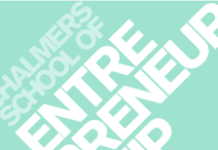One of the five main propositions in my newly finished dissertation (read it here) is a classification of four different approaches to action-based entrepreneurial education. It represents an answer to the question: “learning-by-doing-what“? Often when people talk about action-based education, they tell us what they mean by mentioning a couple of different approaches, instead of being specific about what they really mean. I’ve tried to identify some generic differences between various approaches, thereby proposing four different levels of action-based approaches. That way we can distinguish various approaches based on what is the key differentiating factor, instead of getting lost in all different aspects of action. Here are the four classes of action-based entrepreneurial education I’ve proposed in my dissertation (a nice figure is shown on p. 25 in my dissertation):
Creation approach. When we let learners try to create something as part of education. Could be a report, a play, a drawing, etc.
Value creation approach. When we let learners try to create something that is valuable to an external stakeholder as part of education. Could be a pitch, a business model canvas, a job done (through internship), a play (with audience this time), a collaborative result of some kind (with external collaborators).
Venture creation approach. When we let learners try to create an organization that delivers some kind of value to external stakeholders as part of education. Could be a mini-company, a consultancy firm, a business plan realized during the education, a venture pitch in a business plan competition.
Sustainable venture creation approach. When we let learners try to create an organization that delivers some kind of value to external stakeholders as part of education, but also with the purpose of making this a long-term company (i.e. not liquidate it after course end). Could be a real-life-mini-company or any kind of organization / venture with economic or social goals. This is the class where I put Venture Creation Programs (the topic of this blog).
From the above we can conclude that some kinds of educational activity that don’t fall into any of these classes and thus are not action-based are: lectures, guest lectures, class discussions, study visits and literature study. They typically don’t generate as much motivation, meaning and engagement as action-based approaches. But they are easy to deliver for the teacher. Lazy track, so to say.
If you want to read more, have a look at my dissertation which presents this in much greater detail. It can be downloaded here.



